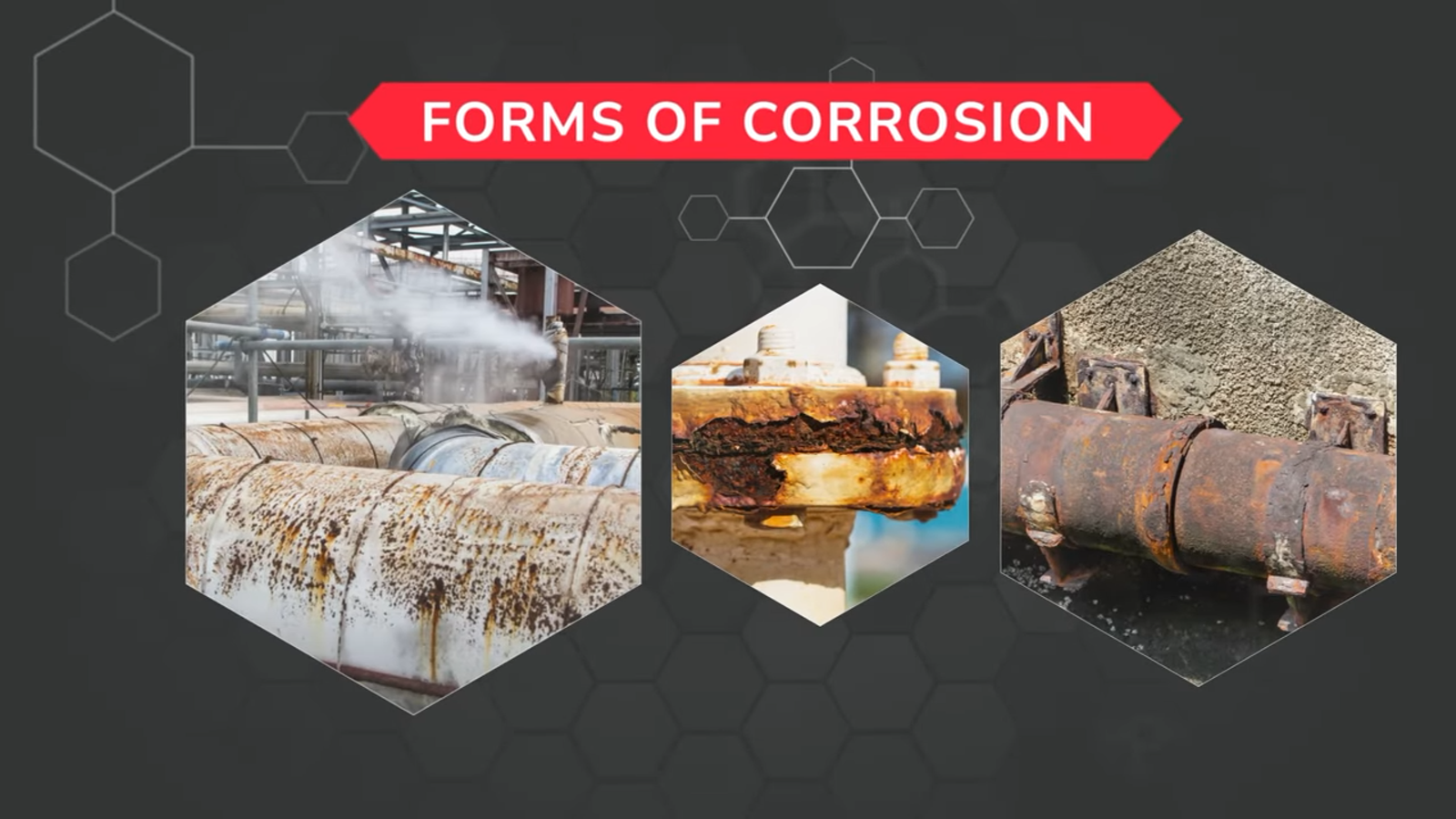课程名称
腐蚀类型
Forms of Corrosion
课程概述
腐蚀的形式是根据它们表现的方式来分类的。
确定腐蚀的形式需要仔细观察,检查腐蚀的测试样品,并分析故障设备。
一般来说,腐蚀分为三种类型:
•通过视觉观察确定腐蚀
•需要额外检查方法的腐蚀
•需要显微验证的腐蚀
The forms of corrosion are classified by the ways in which they display.
Identifying forms of corrosion involves careful observation, review of corroded test specimens, and analysis of failed equipment.
In general, corrosion is grouped into three types:
• Corrosion determined by visual observation
• Corrosion needing additional means of examination, and
• Corrosion requiring microscopic verification
You may have also heard of M-I-C, or microbiologically influenced corrosion. This is when microorganisms like bacteria, fungi and microalgae speed up corrosion reactions and cause rapid corrosion of metals and alloys.
M-I-C can speed up any form of corrosion.
The first main type of corrosion is the form that can be seen with the naked eye. These forms of corrosive attack generally occur evenly over the entire surface area. They can be easily measured and predicted, and rarely will they cause disastrous failures.
When protective coatings break down, this type of corrosion will cause oxidation and surface patina. Surface corrosion should be treated or repaired before general thinning sets in and causes failure. Always examine the surface closely for signs of more serious types of corrosion.
The next group of corrosion includes types that require additional examination. Often this corrosion is caused by ongoing exposure to corrosive fluids, gas pockets, and chemical segregation that deteriorates grain boundaries in the microstructure of metals and alloys.
Dealloying, or selective leaching, for example, is when one element of an alloy is removed through the corrosion process and the structure retains its appearance while becoming weaker structurally.
With these types of corrosion, the mechanical properties of the structure can be seriously affected and lead to failure.
Finally, there are forms of corrosion that require microscopic verification. These are the most serious types of corrosion because they cause cracks to form and can lead to structural failure from overload.
Tensile stress variables and increased strain energy along grain boundaries are likely to cause this type of corrosion. High localized stress and metal that is subjected to cold-work are likely to corrode in this manner and crack more quickly. Once you’ve identified the forms of corrosion you may be dealing with, it’s time to look at corrosion prevention and mitigation.
课程目录
- 介绍
